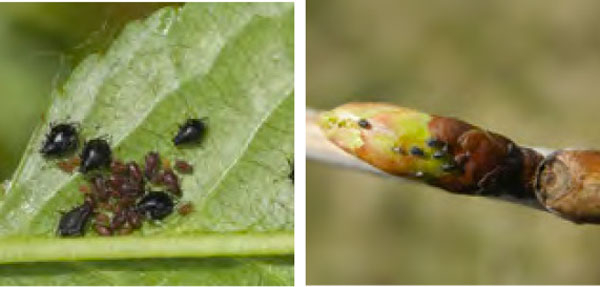Adult cherry aphids are dark coloured and approximately 2 mm in size. The adult population consists of winged and wingless individuals.
The nymphs are dark brown to black. Cherry aphid eggs are usually found on the underside of leaves and are shiny and oval-shaped.
Damage
Aphids will often inhabit terminal leaf shoots, particularly young leaves.
Infested leaves will curl, providing a protected space for aphids to continue feeding.
Honeydew secreted by the aphids can result in sooty mould growth on the crop, making the fruit unmarketable.
If the infestation is severe, leaves may brown and drop.
Monitoring
Examine trees regularly during and shortly after budbreak for aphids. Particular attention should be paid to the terminal shoot tips.
Continued monitoring each fortnight until harvest is recommended.
Management
Cultural and physical
High levels of nitrogen can promote soft new growth and this is favoured by aphids.
Using smaller, more targeted amounts of fertiliser throughout the growing season can help moderate vegetative growth and reduce aphid infestation.
Good weed management can reduce potential harbours and therefore reduce migrating aphid populations.
Biological
Fortunately it is possible to achieve good aphid control using naturally occurring biological agents.
Lacewings are aggressive general predators that will feed on aphids and can provide useful control.
Lady beetles can be important aphid predators as both the adults and larvae feed on aphids.
Download the Orchard plant protection guide 2020-21
See this article in Tree Fruit Jan 2021




















